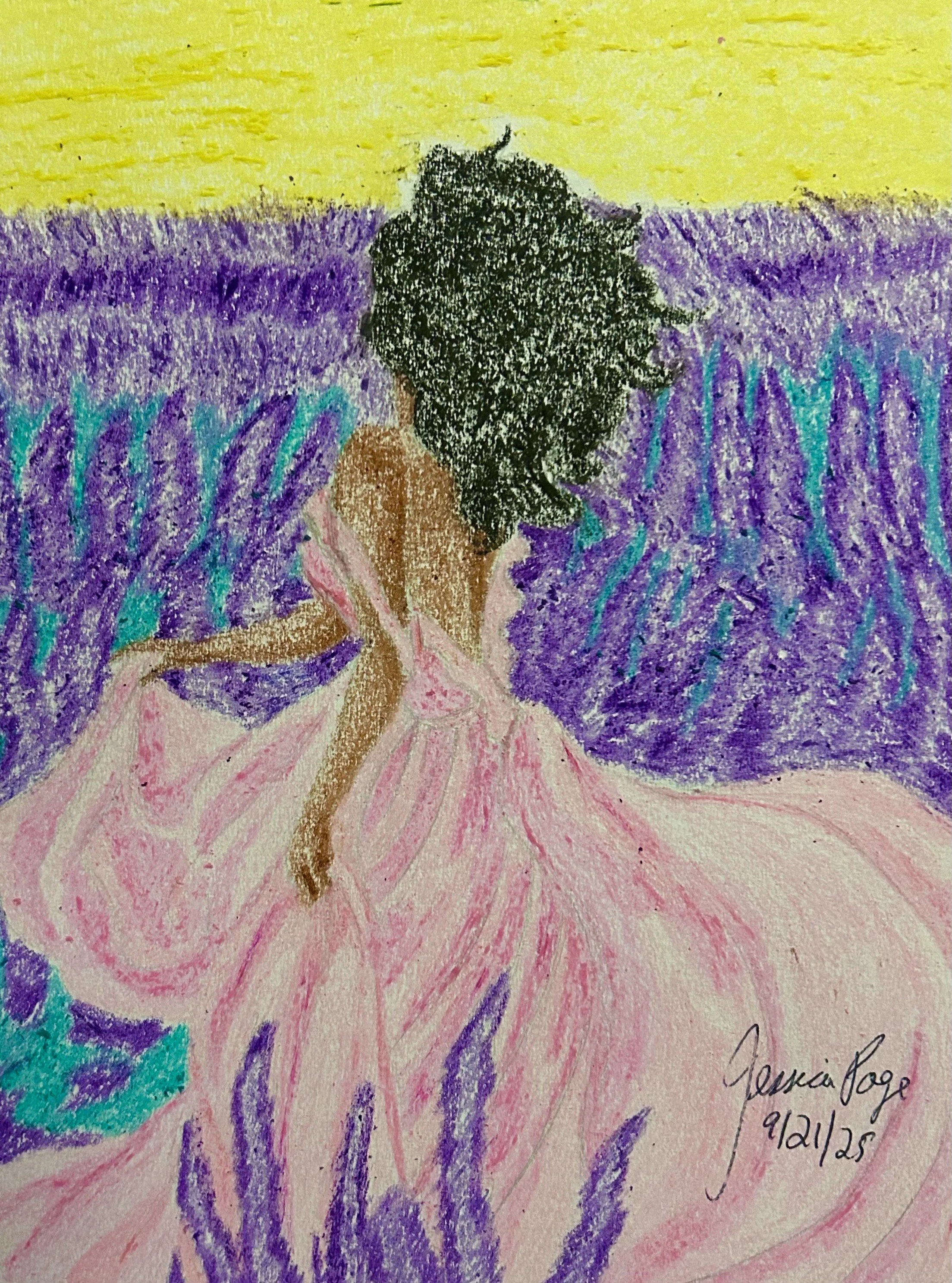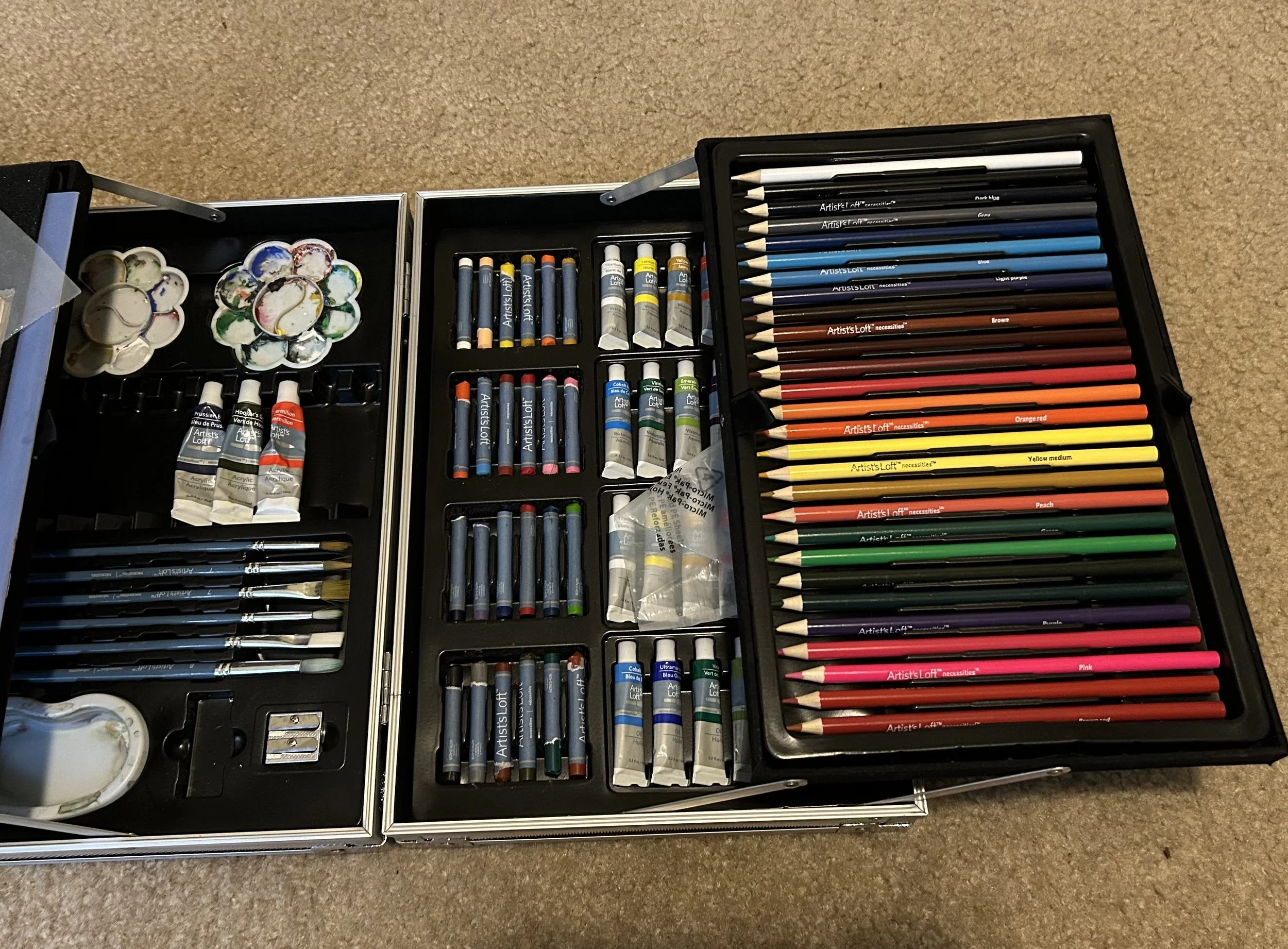My Experience Trying Oil Pastels for the First Time
If you’re familiar with my art, you know that I like to do a lot of different things with it. I’m always switching between different mediums and I’m open to trying new styles, color patterns, and art materials. The most recent thing I’ve gotten into—oil pastels.
I’ve actually made one attempt at oil pastels before. A long time ago, like around 10 to 12 years ago, I received a set of oil pastels with a bundle of colored pencils and paints. I had never tried or even seen oil pastels before so I thought I’d try them out…and I wasn’t really a fan.
My First Oil Pastel Projects vs. New Projects
I thought the texture was too chalky and it was difficult to get a smooth layer of color, which was what I was used to at the time. At the time, I figured I had gotten a bad batch. After all, I’d had the oil pastels for several years at that point so I just thought they had gone stale since they handled in such a weird way. I put them away and didn’t touch them again after that.
Recently, I found myself in a similar situation. I had a set of art supplies that I had gotten as a gift a little over a year ago. By now, I had used all the acrylic paint that it came with and had done a lot of pieces with the colored pencils as well. One day, while I was looking through the box and trying to decide what to do next, I noticed the untouched oil pastels, recalled my first attempt years ago, and decided to give it another shot.
So what happened? I like to do portraits so I decided that would be my first piece. Using a reference photo from Pinterest, I selected warm toned colors like yellow, orange, and red to go for a soft, feminine look. The main draw of the piece was going to be the big, luscious red lips and the warm colors would be offset by the black curly hair.
My first impressions of the oil pastels: I still thought they were chalky and it was difficult to get a consistent texture. Then I tried to blend the colors thinking that was my problem, but I thought they were hard to blend as well. It wasn’t like something like charcoal, which is soft and blends easily with a light touch. I was pressing hard trying to get the effect I was looking for.
I liked the finished product well enough, but I have to say I wasn’t super impressed with the oil pastels overall. However, it was my first time and I was willing to give it another try.
For my next project, I decided to do something less heavily focused on facial features. This was more about the lavender field landscape and the flowing pink dress. I didn’t bother to do much blending in this one. While I did like the colors and the overall atmosphere of the picture, I liked this one less than the first one.
The last one in this series was also less focused on the face and more about the general scene. This one was done on larger paper so I didn’t have to worry about many small details. Although I still wasn’t the biggest fan of the texture of the oil pastels, I was satisfied with how stylized the picture looked and also how I was able to try out layering colors.
What I Learned
So, overall, I wasn’t very excited about oil pastels by the end of it. On a positive note, I did think the colors were very vibrant so that was good. However, I really didn’t like the texture and the use of them. They were very chalky, streaky, and difficult to blend. By the end of my third drawing, I was about ready to tear my hair out and thought I would rather use just about any other medium.
I did some reading about oil pastels on other art blogs and subreddits and found some things that might have hindered my experience and tips to possibly improve if I decide to continue with these.
Product Quality Is Super Important
First is the quality of the materials. Mine are from Artist Loft, which I know aren’t the highest quality products to begin with, but it looks like product quality of oil pastels really matters. Other blogs say that oil pastels are supposed to be soft and easy to blend. Some reels I saw on Instagram showed squishy oil pastels that seemed to be almost like oil paint in the way they were used.
Sennelier was the brand that others seem to recommend the most as well as Caran d’Ache and Mungyo Gallery.
Techniques for Oil Pastels
I also found that oil pastels are ideal for layering colors. I did a little bit of this in my third drawing and in my first where I was treating it more like a colored pencil. Although, if you have those high-quality oil pastels that are soft and malleable, it should be easy to layer and blend colors. I saw some tips that mentioned working on them from dark to light like when using oil paint, and using various techniques like underpainting.
Final Thoughts…
While I wasn’t terribly impressed with my first experience using oil pastels, I realize that I don’t have the most high quality products which may be heavily impacting the finished product. I’ve seen countless beautiful pieces in oil pastels that are beautifully blended, vibrant, and smooth in color, so I know it’s possible.
I don’t think I’m done with oil pastels yet. I might give it a few more tries with the ones I have, just because I have them and I don’t like to let materials go to waste. I may even find myself buying the recommended brands of oil pastels in the future to see what kind of outcome I can really get.



